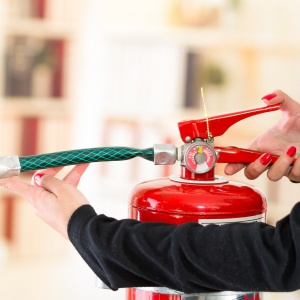Fire Safety Training: Why It’s An Essential Investment

It’s vital to keep updating the fire safety training of your employees. Psychological research has indicated that the more often skills and techniques are practised, the better they’re retained. So think about factoring in a few fire safety training courses into your annual schedule for maximum results!
Why Should I Invest In Fire Safety Training?
Fire safety training is written by expert authors and is accredited by the Institute of Fire Safety Managers and the Royal Society for the Prevention of Accidents. The training course provides the fundamental knowledge and skills needed not only to respond to actual incidents of fire, but on how to protect your premises against fire, and how to ensure the well-being of your colleagues during an emergency. Investing in a fire safety training will empower your staff to feel prepared for accidents in terms of not only the appropriate legislation, such as health and safety
Understanding The Nature Of Fire
Fire Safety training is written with the intention of providing a basic awareness of fire safety in any organisation, so that staff know how to act in the event of a fire emergency.
The course begins with giving a basic overview of the nature of fire. This is included as so to improve the understanding of the how fires can start and grow - and in turn, how they can be combated. A thorough understanding of the three main ingredients you need for fire - oxygen, fuel, and heat - is essential to develop an ability to prevent and respond to fire-related incidents. This section of the training course also covers what items in your workplace might be fire hazards, and how to ensure that they pose as little of a danger as possible.
Different Fires - Different Responses
There are five different categorisations of fire - and five different ways in which they should be responded to. These five different kinds of fire are as follows: solids (such as food, paper, and plastic), flammable liquids (paraffin, petrol and oil), flammable gases (butane, propane and methane), metals (like aluminium and magnesium), electrical fires (involving electrical appliances), and cooking fires, which normally involves fat and oil.
Each of these fires has to be treated with a different fire extinguisher in order to ensure the best results. Solid substance fires should be treated with water fire extinguishers, while flammable liquid and flammable gases fires should be treated with either foam or dry powder extinguishers. Specialist fire extinguishers alone can be used against metal fires and cooking fires, and an electrical fire can only effectively be contained with a CO2 extinguisher.
This knowledge is absolutely essential for an effective fire safety response as incorrect use of a fire extinguisher on a fire can not only fail to prevent the spread of the
Ready to invest in a fire safety training course for your workplace? Get in touch!
Return to news